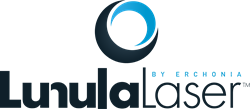INGROWN TOENAILS
DEFINED: The true ingrown toenail is a sharp piece of toenail which has impaled the surrounding skin and caused a wound, which has associated pain and sometimes infection. However, toe pain associated with nail pressure to the surrounding skin, without a wound, has also commonly been called an ingrown toenail. Practically speaking, the etiologies* are similar and the treatments are generally the same, so the two conditions are often both referred to as ingrown toenails. (*etiologies - the factors that lead to or cause the conditions)
CAUSES: The ingrown toenail (impaling type) is usually caused by incomplete cutting of the side of a toenail, causing a sharp point to remain at the edge, which eventually grows out into the adjacent skin of the nail groove. This is the most painful form of an ingrown nail, and can create a lot of inflammation. This can also occur with direct trauma to the toenail, pushing the nail and the toe into each other.
The other type of "ingrown" toenail is from external pressure on the toe, causing the skin to be pushed into the nail, which creates pressure at that portion of skin. The external pressure can be from a close-fitting shoe, or an adjacent toe. There may be some callous buildup along the nail as a result of this, which can also contribute to the irritation.
TREATMENTS: In either case, the immediate treatment involves removing any problematic nail section. In the absence of a wound, this can be straightforward.
Often, if the nail is accessible, local anesthetic is not necessary. However, when there is a lot of pain and inflammation, or when the nail is deeply embedded, local anesthetic injection to numb the area may be required to tolerate this procedure.
If there is an infection, oral antibiotic treatment is necessary. Generally, however, infection is uncommon.
Any external factors (shoes, activities, toe pressure) should be addressed as well.
If this is a recurring problem, permanent removal of that side of the nail can be a good long-term solution.



